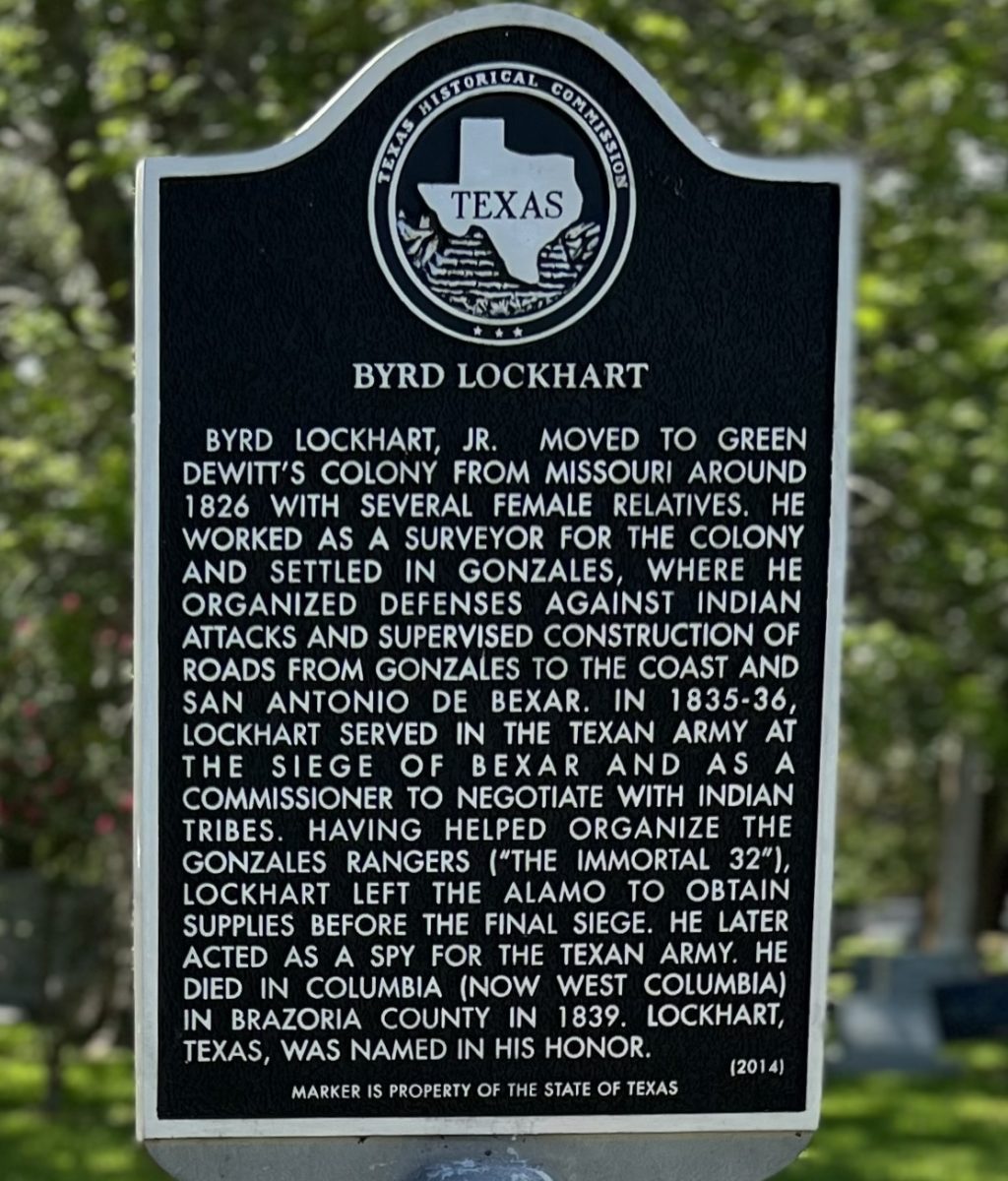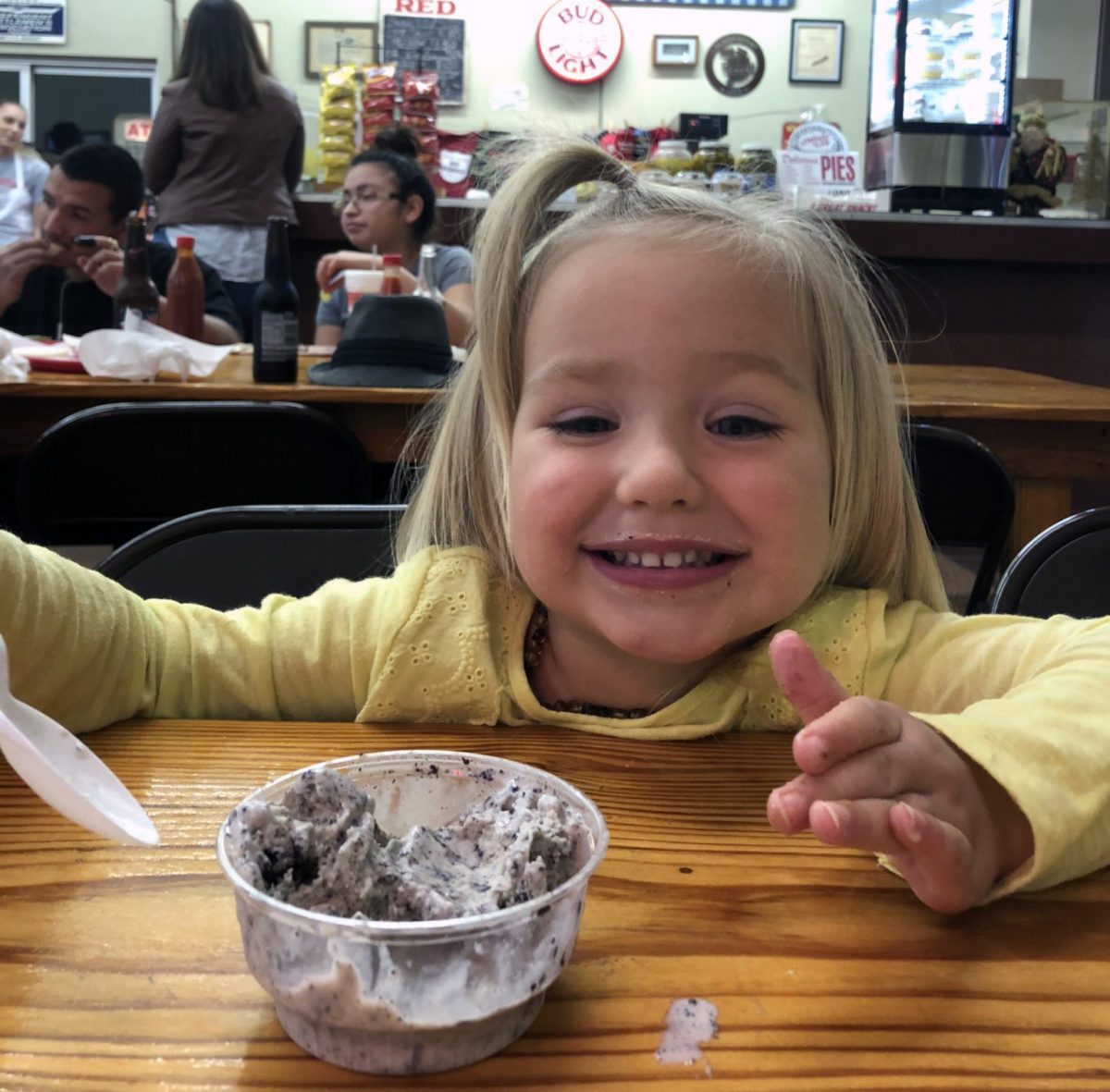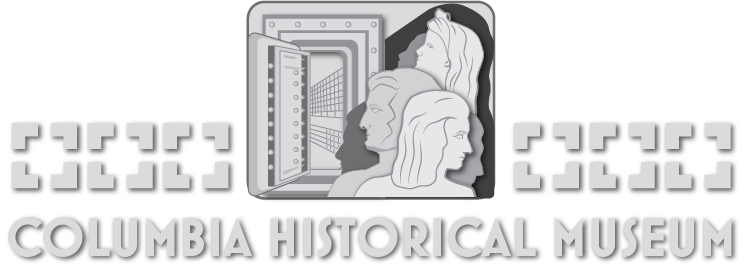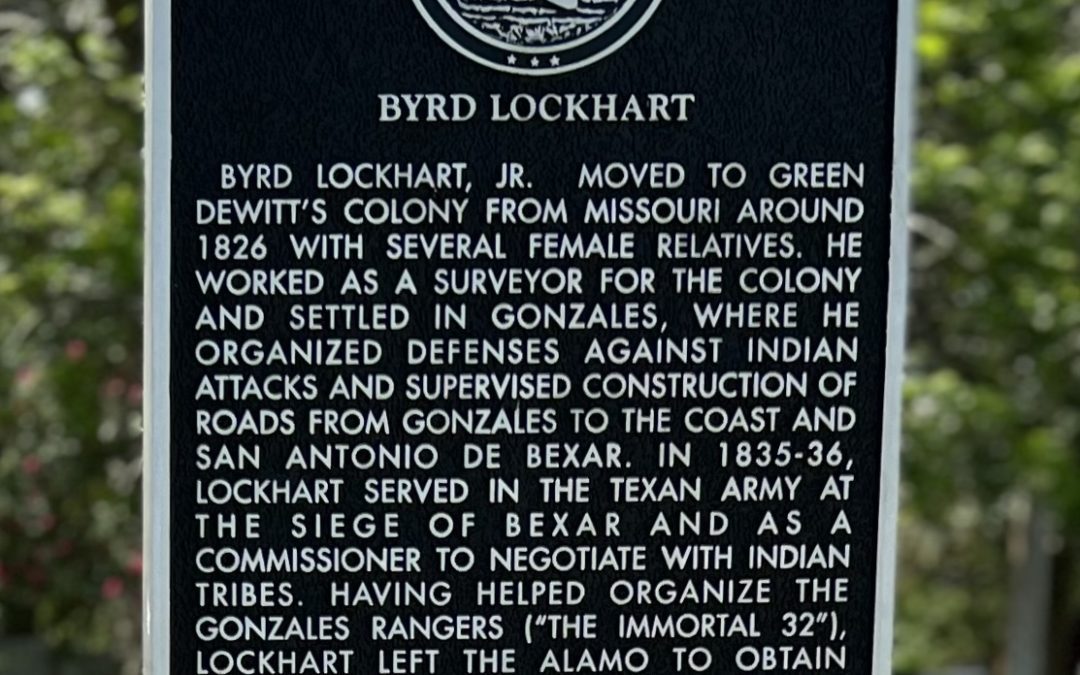![]()
By Benjamin Tumlinson
Columbia Historical Museum Board Member
I don’t know about you, but when I hear the word Lockhart, I get hungry. No matter where my family moved in the state, we would always make the pilgrimage to Lockhart for barbeque. In fact, several times after returning from overseas, I would gather up the family and make the trek to eat at Smitty’s.
That may bring up some animosity and fuel the fire of the “Who’s the best?” argument in your household – Smitty’s or Black’s barbeque? Maybe you prefer Chisholm Trail or maybe Kreuz? I suppose a guy could have a coronary trying to answer that question.
In Lockhart, barbeque is king. On May 26, 1999, House Resolution #1024 was adopted by the 76th Texas Legislature naming Lockhart the ‘Barbecue Capital of Texas’. In fall 2003, the Texas Senate followed suit. Like the legendary barbeque associated with Lockhart, the town’s namesake represents a legendary man… and he’s buried here in West Columbia.
Byrd Lockhart Jr. was born in Virginia in 1782 to Byrd Sr. and Sarah Williamson Lockhart. Not much is known about his early life, but it is known that he was in public service as a surveyor in 1814 in the area around Madison County Illinois.
Byrd and his brother were believed to be the earliest surveyors in Arkansas as a part of Louisiana Purchase. (Arkansas Commissioner of State Lands) He was a widower when he moved to Texas from Missouri with his mother, sister, and two children, after meeting Green DeWitt in New Orleans.
He settled in DeWitt’s Colony on March 20, 1826, and made his living as a surveyor. (Bill Groneman, “Lockhart, Byrd,” Handbook of Texas Online). By December of that year Lockhart was named deputy surveyor for DeWitt’s Colony and in April 1831, he was appointed surveyor general of DeWitt’s Colony by Governor Jose Navarro.
Lockhart was familiar with the colony and area. He was an excellent choice to serve as surveyor-general for the colony. Assisted by his brother Charles, Byrd Lockhart conducted almost all the surveying of grants in DeWitt’s Colony in 1831 and 1832. (Texas General Land Office) Lockhart played a crucial role in opening up roadways throughout early Texas settlements. He surveyed and supervised building the road from Bexar (present day San Antonio) to Austin and south through Gonzales to Matagorda in 1827. Byrd was paid for efforts with land grants, one of which was on Plum Creek in Caldwell County, near present day Lockhart.
At the outbreak of the Texas Revolution, he was serving as private under Stephen F. Austin when he was recruited by Captain James Fannin as a scout. Because of his knowledge of the area, he was dispatched to scout the area below San Antonio as well as recruit volunteers. (Arkansas Commissioner of State Lands)
In December 1935, Byrd also served under Captain John York during the Siege of Bexar. Lockhart was counted among the men at the Alamo while Santa Anna and his men marched toward San Antonio. On Feb. 4, 1836, in preparation for the looming battle, he and Andrew Jackson Sewell were sent to obtain supplies.
Additionally, Lockhart, Mathew Caldwell and William A. Mathews were commissioned to raise volunteers for a ranging company. Sowell and Lockhart found it difficult to obtain the necessary supplies. On Feb. 24, 1836, Colonel William B. Travis appealed for reinforcements.
“I am besieged by a thousand or more of the Mexicans under Santa Anna. I have sustained a continual bombardment & cannonade for 24 hours and have not lost a man. The enemy has demanded a surrender at discretion, otherwise the garrison are to be put to the sword if the fort is taken. I have answered the demand with a cannon shot, and our flag still waves proudly from the walls. I shall never surrender nor retreat.
“Then, I call on you in the name of Liberty, of patriotism, and of everything dear to the American character, to come to our aid with all dispatch. The enemy is receiving reinforcements daily & will no doubt increase to three or four thousand in four or five days. If this call is neglected, I am determined to sustain myself as long as possible & die like a soldier who never forgets what is due to his own honor & that of his country. Victory or Death.”
On Feb. 23, the Gonzales Ranger Co. of Mounted Volunteers were mustered into service by Lockhart. He, Sewell and others would ride back with the 32 Rangers, into the Alamo, on the morning of March 1 and departed again, at night, as other couriers left. (Sons of the Dewitt Colony) These Rangers would be forever heralded in Texas History as the Immortal 32, representing the only volunteers to answer Colonel Travis’ call for aid and sacrificing their lives for the cause of Texas Independence. Lockhart, Sewell, and John William Smith would be sent out for provisions prior to the fall of the Alamo and are the only survivors that rode into the Alamo with the immortal 32. It is rumored that Lockhart and others would return to the Alamo and retrieve the remains of the fallen, but the records are not clear if this was the case.
Lockhart would go on to serve in the Texas Army as a captain and was discharged from service in 1836. Lockhart died of an unknown illness in Columbia three years later. He is buried in the Old Columbia Cemetery. His death is recorded in the July 24, 1839, edition of the “Telegraph & Texas Register” it reads as follows:
“Departed this life, at the residence of Mrs. Bell, near Columbia, on the 2nd instance, Rev J.L.J Strickland, after a short illness. Mr. Strickland came to Texas as a minister of the Gospel, and in the discharge of his duties in religious capacity, we feel assured that none were more exemplary. His loss is much to be lamented by his friends and acquaintances
At the same place, and about the same time, very unexpectedly to his friends, Bird Lockhart, Esq, one of the most beloved in social life, and most valuable private citizens of Texas.” I recommend you make time for two detours in life. First, stop by the Old Columbia Cemetery and pay homage to a legendary Texan, then head straight to Lockhart and sample the best barbeque in Texas. You won’t be sorry.

Cruger & Moore. Telegraph and Texas Register (Houston, Tex.), Vol. 5, No. 6, Ed. 1, Wednesday, July 24, 1839, newspaper, July 24, 1839; (https://texashistory.unt.edu/ark:/67531/metapth48063/m1/3/: accessed August 17, 2022), University of North Texas Libraries, The Portal to Texas History, texashistory.unt.edu

Photo by Benjamin Tumlinson. Byrd Lockhart historical marker in the Old Columbia Cemetery

Butcher Block, Smitty’s Market, Lockhart

Granddaughter’s approval of Blue Bell Ice Cream at Smitty’s Market in Lockhart

